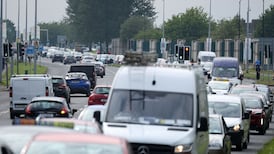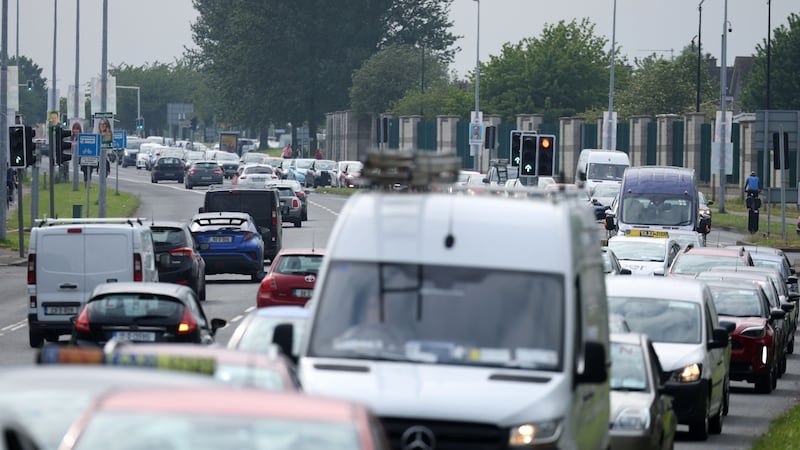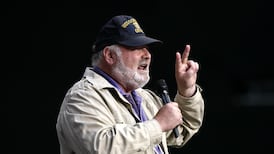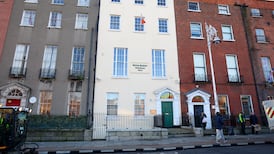HISTORY: Dublin 1916: The Siege of the GPO By Clair WillsProfile Books 299pp £14.99
ON EASTER Sunday 2006 Ireland marked the 90th anniversary of the 1916 Rising with a lavish military parade past the GPO, witnessed by the President, political leaders, relatives of 1916 veterans, and an estimated 100,000 people. The 2006 ceremony was significant because it marked the revival of the official military parade which had been abandoned in the early 1970s because of the Troubles in Northern Ireland.
After a long fallow period, the 1916 Rising is attracting a new wave of publications. The long-awaited release of Bureau of Military History files, which contain graphic accounts by participants in the Rising, has proved a fertile source of material. Clair Wills, professor of Irish Literature at Queen Mary University of London, and author of an excellent study of Ireland during the second World War, is the latest scholar to turn her attention to 1916.
This is not a history of the Rising: it is a discursive essay on the GPO, its central role in the Rising, and the commemoration and interpretation of the Rising since that time. Wills has mined the histories and memoirs relating to 1916 and the Irish Revolution for material; she has also made extensive use of numerous writings on historical memory and commemoration – relating to Ireland and more generally. She is interested in “the symbolism of the events and their aftermath”; the transformation of the GPO “from an emblem of nineteenth-century British power and civil government to a barricade against shelling, to a national symbol”.
This concentration on the GPO and the limited attention given to the political background, would suggest this book is not the best introduction to the Rising for a general reader. Anybody familiar with the events and personalities will enjoy the anecdotes and Wills’s reflections, which are delivered with verve, but those who are unfamiliar with the Rising and its historical context may well be confused by references to “a place at the peace table”, or frustrated by brief references to “the story of Casement . . . his conversion to Catholicism and deathbed prayers”, without any further details or background.
Wills is at her best when discussing the poetry and dramatic works that were prompted by 1916. The Rising inspired an amazing amount of poetry, as did the first World War. Poetry was “virtually a mass medium” in Britain during those years, though the commemorative poetry inspired by 1916 was not particularly innovative.
Yeats's poem Easter 1916was, Wills claims, an equivocal commemoration – which is probably why 1916 veterans such as Eamon de Valera did not want it to feature in the Golden Jubilee commemorations. In later chapters, she guides us through dramatic representations of the Rising and Irish history, ranging from Sean O'Casey's The Plough and the Starsto Insurrection, Hugh Leonard's dramatisation commissioned by Teilifís Éireann to mark the 1966 Jubilee. Photographs showing the interior of the GPO, taken just before the Rising, and the set of Insurrection show the RTÉ team went to considerable efforts to replicate the GPO as it was during the Rising: this was consistent with the documentary realism of Insurrection.
Wills claims that “the Easter commemoration at the GPO became the equivalent of Independence Day in America or Bastille Day in France”, going on to compare the Golden Jubilee commemoration in 1966 to the Coronation of Elizabeth II. This is overstated. It was by no means predetermined that the GPO would become the most important commemorative site for the Rising. She speculates as to why the GPO became the headquarters for the Rising – suggesting it was an important arm of the civil service and a key communications centre. By 1916, Sackville St/O’Connell St, Dublin’s widest thoroughfare, had become a popular location for public demonstrations. Charles Townshend, in his 2005 history of 1916, suggests the location may have been accidental: the rebels made no formal decision on the GPO; they had planned to also occupy buildings on the other side of the street.
By 1923 the GPO and O’Connell St were in ruins; buildings that escaped the bombardment in 1916 were destroyed during the Civil War. The town plan for the “Dublin of the Future”, drawn up by Patrick Abercrombie, proposed moving Dublin’s centre of gravity from O’Connell St to a new main thoroughfare at Church St/Capel St. The Dublin Civic Survey planned to rebuild the GPO as the new City Hall, with a new GPO and central station constructed in the ruined Custom House.
The Irish Free State erected a cenotaph on Leinster Lawn as a memorial to Collins and Griffith and those who fought for Irish freedom. WT Cosgrave proposed offering the ruined GPO to the Archbishop of Dublin as the site for a Catholic cathedral – whether this would have created a combined religious and political shrine we will never know.
Kilmainham Jail, site of the 1916 executions, could easily have emerged as the major commemorative site, especially if plans to locate the Oireachtas in the Royal Hospital had been implemented. In the event the reopening of the restored GPO in 1929 and the unveiling in 1935 of Oliver Shepherd’s statue of Cuchulainn as a 1916 memorial strengthened the GPO’s claim to be the premier commemorative site. Nevertheless we should not exaggerate the importance of the Easter commemorations there. Attendance was often sparse, except in jubilee years like 1941, 1966 or 2006, and College Green was the traditional site for large political rallies.
Before the onset of the recession there were plans underway to transform the GPO into a major ceremonial site – where future presidents of Ireland would be inaugurated alongside a 1916 museum. If this happens it will mark the formal recognition of the centrality of the GPO and 1916 to the Irish state.
Mary E Daly is principal of UCD College of Arts and Celtic Studies. Her last book, 1916 in 1966: Commemorating the Easter Rising(co-edited with Margaret O’Callaghan), was published in 2007
Clair Wills will be interviewed by Fintan O’Toole about Dublin 1916at 6pm on Monday April 20th in the Royal Irish Academy, 19 Dawson Street, Dublin 2. Places for this free event are limited and must be booked in advance from: Dublin1916@ria.ie or by calling 01-6090635










